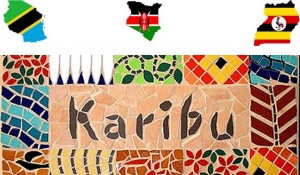Difference between revisions of "Language/Swahili-individual-language/Culture/History-of-Swahili"
m (Quick edit) |
m (Quick edit) |
||
| Line 1: | Line 1: | ||
<span pgnav> | |||
{| class="wikitable pg_template_nav" | |||
|[[Language/Swahili-individual-language/Vocabulary/Days,-Months,-and-Seasons|◀️ Days, Months, and Seasons — Previous Lesson]] | |||
|[[Language/Swahili-individual-language/Culture/Food-and-Drink|Next Lesson — Food and Drink ▶️]] | |||
|} | |||
</span> | |||
{{Swahili-individual-language-Page-Top}} | {{Swahili-individual-language-Page-Top}} | ||
| Line 75: | Line 82: | ||
{{Swahili-individual-language-Page-Bottom}} | {{Swahili-individual-language-Page-Bottom}} | ||
<span links></span> | <span links></span> | ||
<span pgnav> | |||
{| class="wikitable pg_template_nav" | |||
|[[Language/Swahili-individual-language/Vocabulary/Days,-Months,-and-Seasons|◀️ Days, Months, and Seasons — Previous Lesson]] | |||
|[[Language/Swahili-individual-language/Culture/Food-and-Drink|Next Lesson — Food and Drink ▶️]] | |||
|} | |||
</span> | |||
Revision as of 18:45, 29 March 2023
| ◀️ Days, Months, and Seasons — Previous Lesson | Next Lesson — Food and Drink ▶️ |
As a Swahili language teacher with over 20 years of experience, I am excited to guide you through the history of Swahili. Swahili is an official language in Tanzania, Kenya, Uganda, and the Democratic Republic of Congo, and it is spoken by over 100 million people in East Africa. Prepare to explore the evolution of Swahili from its Bantu origins to its current linguistic and cultural significance.
After mastering this lesson, these related pages might interest you: Contemporary Literature & Maji and the Maridadi.
Origins of Swahili
The Swahili language belongs to the Bantu language family and alternately derives its name from the Arabic word "sahel" meaning coast, or the Persian word "sahil" meaning boundary or limit. Swahili speakers were initially traders and fishers living along the East African coast, and they began to establish a trading network with the Persian Gulf and Singapore. The Swahili engaged in extensive trade in goods as varied as ivory, gold, slaves, and spices. Contact between these traders and Arabic and Persian merchants would transform the Swahili language into a beautiful admixture of Bantu, Arabic, Persian, and Portuguese elements.
Development of Swahili
Islam arrived on the coast of East Africa in the 7th century and greatly influenced Swahili vocabulary and culture. The first known text written in Swahili - "The Voyages of Sa'id ibn Sultan" - was a travelogue documenting a pilgrimage to Mecca in 1844. Later, Swahili literature like "Utendi wa Mwana Kupona" and "Fumo Liyongo" would emerge alongside the poetry of the Tumbatu and Pate islanders. The development of Swahili was also aided by Christian missionaries who began recording the language in the late 18th century.
Swahili gained official language status in Tanzania in 1967 and Kenya in 1974, which helped standardize the written form of the language. The creation of a standardized Swahili grammar and the establishment of language academies promoting Swahili have helped sustain and promote the use of the language.
Importance of Swahili
Swahili is a language of international importance due to its strategic position as a connector of African and Indian Ocean cultures. It is spoken not only in East Africa but also in countries such as the Comoros, Mauritius, Oman, and Somalia. The language continues to evolve, with new words and phrases being added to reflect shifts in social and commercial contexts, while Swahili itself has influenced other languages such as Kimwani and Shikomor.
Swahili is also an important language in academic research, diplomacy, international trade, and tourism. In East Africa, Swahili is used in education from primary school to university, and in many cases, it is a requirement for employment in the public and private sectors.
Swahili Linguistic Features
Swahili features many unique linguistic elements, including a complex noun class system, seven noun classes, complex agreement rules, and cases. It has a rich vocabulary with a significant proportion of Arabic, Persian, and other foreign loanwords. The language is also characterized by its rich sound system, which includes clicks, implosives, and a series of consonants unique to the Swahili language.
Let's take a look at some examples of Swahili words:
| Swahili (individual language) | Pronunciation | English |
|---|---|---|
| "Jambo" | dʒam.bo | Hello |
| "Safari" | sa.fa.ri | Travel or journey |
| "Mzee" | m.ze.e | Elder or wise person |
| "Uhuru" | u.huu.ru | Freedom or independence |
Conclusion
Swahili is a language with a rich history and cultural significance in East Africa. I hope this lesson has provided insight into the evolution and import of Swahili, and the fascinating blend of Bantu, Arabic, Persian, and Portuguese elements that make it unique. As you continue to learn Swahili, you will develop a greater appreciation for its linguistic and cultural richness.
Impressive work on finishing this lesson! Explore these additional pages to enhance your understanding: Religion and Beliefs & Sherehe za Mapinduzi.
Other Lessons
- Popular Culture
- Sherehe za Mapinduzi
- Contemporary Literature
- Maji and the Maridadi
- Religion and Beliefs
- Music and Dance
- Oral Narratives
- Food and Drink
- Visual Arts
| ◀️ Days, Months, and Seasons — Previous Lesson | Next Lesson — Food and Drink ▶️ |
